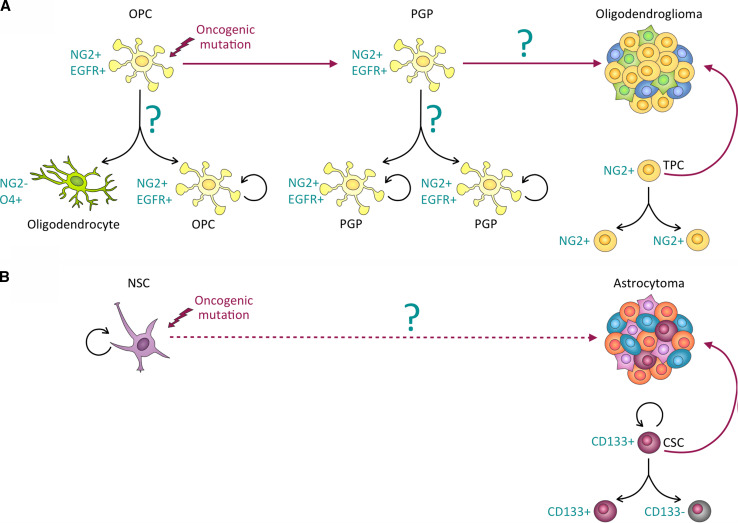Fig. 5.
Cellular origin of malignant gliomas. a Oligodendrocyte precursor cells (OPCs) in the adult brain can divide asymmetrically to give rise to a self-renewing NG2+ OPC and a differentiated NG2-O4+ oligodendrocyte. In p53 hemizygous mice, expression of the viral oncogene verbB in OPCs disrupts asymmetric OPC division and causes hyperproliferation of symmetrically dividing premalignant glioma precursor (PGP) cells, which, following unknown transformative events, eventually give rise to oligodendrogliomas. Similar to their human counterparts, murine oligodendrogliomas contain symmetrically dividing NG2+ tumor-propagating cells (TPCs). b Inducing oncogenic mutations of core signaling pathways (e.g., inactivation of the p53 and Rb tumor suppressor pathways and activation of RTK signaling) in mouse neural stem cells (NSCs) leads to formation of tumors with features of high-grade astrocytomas. CD133+ cancer stem cells (CSCs) isolated from human high-grade astrocytomas self-renew through symmetric and asymmetric cell divisions

